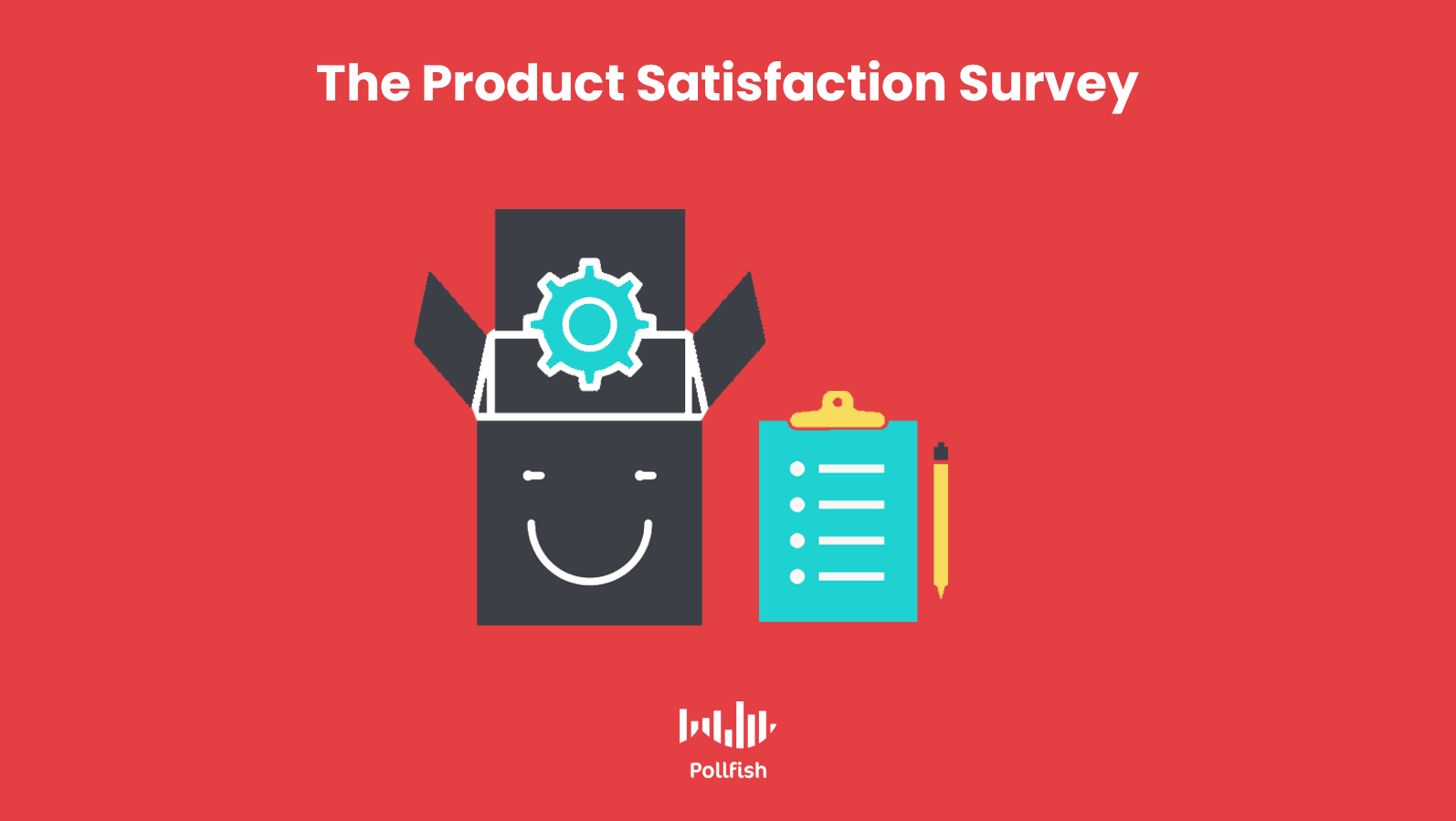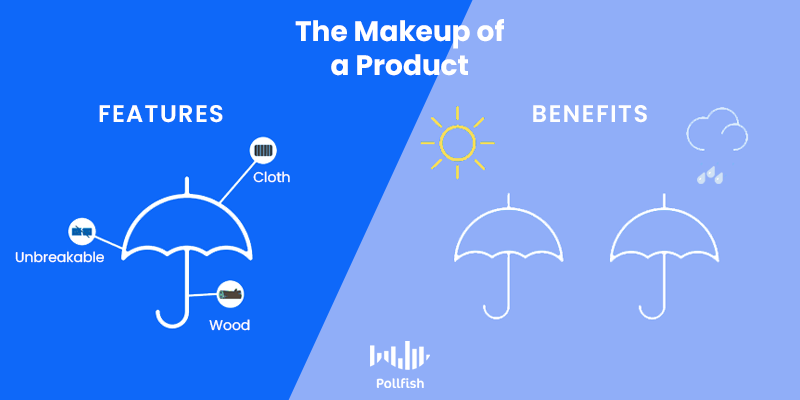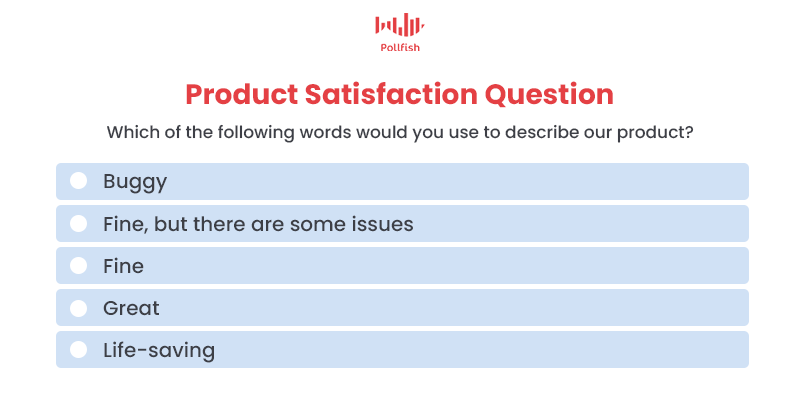Diving Into the Product Satisfaction Survey

Diving Into the Product Satisfaction Survey
With the advent of online survey platforms, delivering a product satisfaction survey into the hands of your customers has never been easier. A product satisfaction survey provides insights that can help ensure the success of your product. Whether you need to measure the general opinions towards your product, its successes, ease or difficulty of use, points of friction, etc., conducting survey research will empower your business.
Product surveys are thus an essential part of your business upkeep. Routine use of product satisfaction surveys will help you create products that your customers will love and enthusiastically recommend to others.
This article will help you understand what you can achieve through a product satisfaction survey and present several tips on how to use the data that you amassed.
Defining Product Satisfaction

At its most basic level, a product satisfaction survey is used to measure how satisfied customers are with your product. This type of survey provides valuable information about how your product is used and how it can be improved.
Product satisfaction differs from customer satisfaction because it seeks to measure satisfaction with the product itself, rather than the entire customer experience While this type of survey focuses primarily on the product itself, you may also examine how your shopping, support, and return experiences affect your overall product satisfaction.
A product satisfaction survey provides candid feedback about the product, while also helping a company understand any discrepancy between the product and customer satisfaction, the latter of which you can determine with customer satisfaction surveys.
Insights Gained in a Product Satisfaction Survey
By focusing the questions on the product itself, a company can learn a great deal about how customers interact with a product. You may consider conducting a product satisfaction survey to:
- Glean insights into the user experience (UX) of your product.
- Understand what customers like and dislike about your product.
- See how your product compares to your competitors’ products.
- Discover how customers use your product.
- Decide how to improve the product.
- Identify features that are lacking or extraneous.
- Measure the useful lifespan of your product.
- Learn what factors lead customers to return your product.
- Understand how the product purchase experience affects overall feelings about the product.
- Determine how much customer support is needed to use the product.
- Gain insights during prototyping and product development to drive key decisions.
- Choose how to market your product to certain market segments.
Questions to Ask to Measure Product Satisfaction
When conducting a product satisfaction survey, you need to understand more than just how satisfied the customer is with your product. It is important to understand how demographics, product features, customer experience, and product retention affect your customers’ overall satisfaction with your product.
You can benefit from using a combination of long and short survey formats. For example, if you want to understand how customer satisfaction changes over time or during a product development cycle, deploying short surveys to anyone who purchased the product will yield a large number of responses.
For short surveys, the most important questions are:
- How satisfied are you with this product?
- How likely are you to recommend this product to a friend? (Also referred to as Net Promoter Score)
- Does the product fulfill the purpose for which you bought it?
- If you could change any part of the product, what would it be?
- Did you experience any problems when using this product?
A short survey can provide quick insights, but a longer survey will provide data that can help shape the future of your product. Below we outline the categories of questions that you should consider including in a more comprehensive product satisfaction survey.
Customer Demographics
During data analysis, you will want to segment and cross-tabulate your data to understand how product satisfaction correlates with various demographic data. Types of information to gather in your product satisfaction survey are:
- Customer age and gender
- Race and ethnicity
- Education level
- Employment status
- Salary range
- Employment type
- Organization type
- Geographic location
- Domestic relationship status
- Number of children
Product Satisfaction
Next, you will want to understand the overall satisfaction with your product. You should include questions that cover all or some of the following topics:
- Overall, how satisfied are the customers with your product (The CSAT format is typically used, measuring customer satisfaction on a scale of 1 to 10)
- How likely your customer is to recommend the product to a friend
- How your product compares to competitors’ products
- How likely your customer is to purchase the product again
- How easy is it is to use the product
Product Features

This section of the survey is the most useful in terms of understanding how to improve or develop your product further. By understanding how existing customers are using your product, you can make informed decisions about the features to include (or remove) in subsequent iterations.
In this section, you can benefit from asking a mix of multiple-choice/scaled and open-ended questions to maximize insights. When using multiple-choice questions, consider “piping” response text from a previous question to personalize the survey and gather deeper data.
Your questions should cover the following aspects:
- Why and when the product is used
- How often the product is used
- Which features are used most frequently
- Which features are missing
- What can be changed or improved about your product
Company experience
While the focus of the product satisfaction survey is on the product itself, it is important to understand how the customer’s experience with your company may negatively or positively affect their feelings about your product. Include questions about the following:
- The purchase experience
- Shipping, processing and returns
- Whether customer service or support was needed
- How well support teams managed the customer’s issue
Product Retention
A final aspect to consider is whether or not your customers tend to keep or return the product and how long it was useful to them. You may wish to include these questions with your product satisfaction survey to help cross-tabulate the data or use them as pre-screening criteria.
- What percentage of customers kept the product vs. returned it
- What are the reasons for returning the product
- The amount of time the product was used before it was discarded or no longer useful to the customer
How to Analyze Product Satisfaction Data
Once the results are in, it is time to start the process of survey data analysis. We’ll provide a brief overview of the data analysis process here. For further information, we encourage you to read our guide, How to Analyze Survey Data Like a Pro.
Survey data analysis is the process of organizing, reviewing, and drawing conclusions from your survey data. When it comes to a product satisfaction survey, you should follow these general steps:
- Review the purpose of your survey. You will have a lot of data to sift through, but staying focused on the data that will help answer your key questions will ensure that you answer your top questions.
- Review, filter, and use crosstabs. Review the data and think about how you will organize it. For example, you may wish to review all scale and multiple-choice questions first and save the open-ended responses for the end. You should use crosstabs reports to dive deeper into your data and understand how satisfaction levels vary between segments.
- Interrogate your data. Before drawing conclusions, take the time to examine your data for irregularities. Try to identify instances of sampling bias and ensure that your results are statistically significant before drawing any firm conclusions.
- Draw conclusions and create a plan for improvement. Based on the results of your survey, you can draw certain conclusions about your product. Once you have a deeper understanding of how satisfied your customers are with your product, you can create a plan to improve your product and/or the customer experience that surrounds it.
Investing in a Product Satisfaction Survey
While product satisfaction surveys are undoubtedly valuable in gauging satisfaction with an existing product, another important application of these surveys is during the product development cycle.
If you are developing a new product or considering how to innovate an existing one, product satisfaction surveys deployed during development allow you to test new features and validate decisions.
Product surveys are a relatively low cost and low effort research method, yet they are capable of yielding rich insights about your product. The results can be used to ensure your product will remain relevant in a competitive marketplace, thereby ensuring the success of your company.
Given all this, it should not be difficult to convince stakeholders to invest in a product satisfaction survey.
Frequently asked questions
What is a product satisfaction survey?
A product satisfaction survey is a type of customer satisfaction survey that focuses on how customers feel about a certain product.
What insights can be gained from a product satisfaction survey?
A product satisfaction survey can be used to gain wide-ranging insights about a product, including what customers like or dislike, how the product is used, what features are missing, how easy it is to use the product, and how to best market the product.
What is the Net Promoter Score?
The Net Promoter Score is a type of product satisfaction survey that results in a numerical value representing the overall customer experience. The survey asks just one question: “How likely are you to recommend our product/company/service to a friend or colleague?” The response is given on a scale of 1 to 10, with 1 being the least likely to recommend the product to a friend or colleague.
What can questions about product retention reveal?
In a product satisfaction survey, understanding why a customer returns a product can help the business understand how to improve their product or change marketing campaigns to ensure the product is purchased by the most appropriate customers.
How does product satisfaction differ from customer satisfaction?
Customer satisfaction levels can be influenced by a variety of factors, including the shopping and support experience. Product satisfaction surveys try to peel away these layers so they can focus on the customer’s satisfaction with the product itself.
Pollfish Marketing Team
Ready to Try Pollfish?
Create your survey with AI, target high-quality respondents starting at $0.95 per complete, and start getting results in just minutes in real-time. From running a simple product concept survey to managing a constant stream of trackers for dozens of clients in dozens of countries, we’ve got you.
